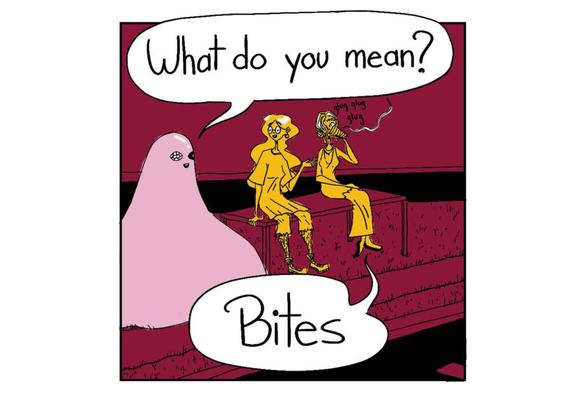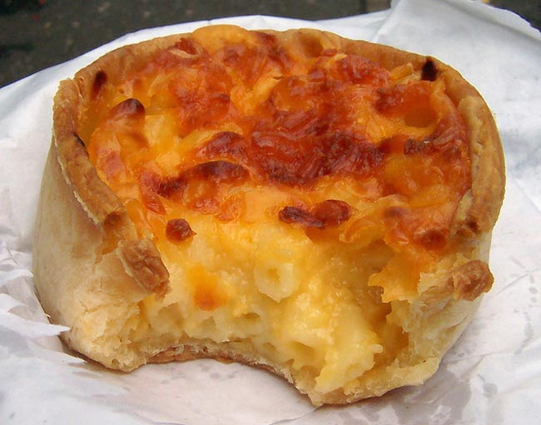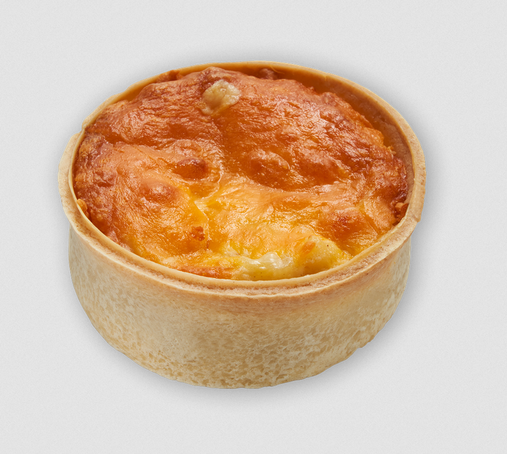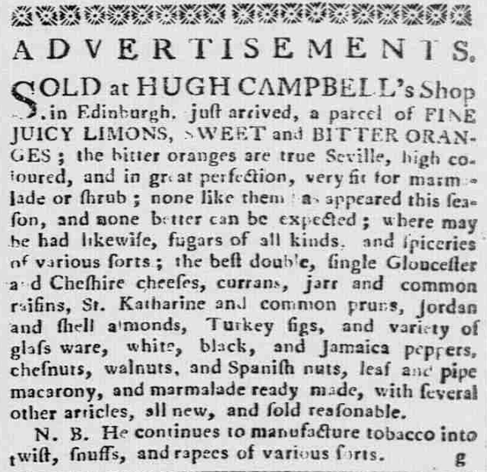Tip #552
タブにカスタムの名前を付けて認識しやすくしよう
タブの名前に情報が不足している、同じ名前のタブがたくさんある、もっと面白いタイトルを付けたいなど、タブに名前を付ける理由は様々あるでしょう。Vivaldi ブラウザではタブに名前を付けることでタブを認識しやすくしたり、タブの整理をしやすくしたりできます。
タブに名前を付けるには:
追記:タブスタックでも同じように機能します(詳しくは Tip #17 を確認してください)
MM: Firing on All Cylinders
Okay! This week we’ve got three projects, none of which have looming deadlines! Amazing!
write a chapter of Being Samantha Masters
extract text from TorchLite for the TorchLite SRD
draft All In One Basket for the TDOV Anthology
Also you can watch the video to see me fuck up Sammy’s pronouns repeatedly, whoops.
And it’s Uskweirs Monday! We’re at the super fun part of the novel where our protagonist Amelia starts messing everything up! Wheee!
Disclosures [Uskweirs 16] here: https://www.patreon.com/posts/117597448 , available for everybody
Home and Other Impossible Tasks [Uskweirs 17] here: https://www.patreon.com/posts/119744406 , for patreon supporters
December 2024 Books
So long, 2024! During the last month of the year I managed to read 12 books, mostly in a futile attempt to get to 100 books read this year. I failed in that goal, but I did read some good books in December:
- What’s The Worst That Could Happen? (Dortmunder, #9) by Donald E. Westlake ★★★★☆ (Read on 12/2/24) – The Dortmunder series is a lot of fun. Dortmunder is a very good burgular surrounded by a group of interesting characters and put into ridiculous scenarios. They made this book into a movie, which I haven’t seen, but that resulted in this book having the worst cover in the entire series.
- A Galway Epiphany (Jack Taylor #16) by Ken Bruen ★★★★☆ (Read on 12/4/24) – Speaking of series, you know I love me some Jack Taylor. Another fine entry in the series, which finds Jack getting tortured yet again.
- Galway Confidential (Jack Taylor #17) by Ken Bruen ★★★★☆ (Read on 12/5/24) – I enjoyed the previous book so much that I just read the next one right after it. My only complaint about this book is that it is the last available entry in the series (for now).
- The Puttermesser Papers by Cynthia Ozick ★★★☆☆ (Read on 12/8/24) – A very well written book that is very strange and doesn’t seem to amount to much.
- The Stars Turned Inside Out by Nova Jacobs ★★★☆☆ (Read on 12/11/24) – A body is found in the Large Hadron Collider, and we need to find out who did it! A great premise for an okay book.
- Floating Hotel by Grace Curtis ★★★☆☆ (Read on 12/14/24) – This is a cozy science fiction booko that I enjoyed reading, but the central “mystery” was pretty obvious though that wasn’t really the point.
- The Murders in Great Diddling (Berit Gardner #1) by Katarina Bivald ★★★★☆ (Read on 12/19/24) – Murder is the point in this book, and it was fair more successful than the previous two mysteries I read. Highly reocmmend it!
- Nicked by M.T. Anderson ★★★★☆ (Read on 12/21/24) – What better time to read about a group of people trying to steal Saint Nicholas’ bones than during Christmas? A lot of fun!
- Nuclear War: A Scenario by Annie Jacobsen ★★★★★ (Read on 12/22/24) – Speaking of fun, this book isn’t. It is a very good creative non-fiction outlining how a nuclear war might start and what would happen (millions of people would be dead and our civilization would be over in about 45 minutes).
- Alien Clay by Adrian Tchaikovsky ★★★☆☆ (Read on 12/28/24) – Tchaikovsky is a great writer, but this book didn’t do it for me. I got his main point since I felt pummelled over the head by it over and over and over again. Felt like a retread of well worn territory with some politics thrown on top (even though I agree with his politics!).
- Finlay Donovan Rolls the Dice (Finlay Donovan, #4) by Elle Cosimano ★★★★☆ (Read on 12/29/24) – This is a fun series featuring a romance writer who keeps finding herself in the vicinity of corpses with the mob chasing after her.
- The Dead Cat Tail Assassins by P. Djèlí Clark ★★☆☆☆ (Read on 12/30/24) – I wanted this to be really good, and I thought the central premise was great. The actual story and execution? Meh.
The term "climate change" often stirs up unnecessary controversy.
It's clear that climate changes occur, supported by well-documented cycles like Milankovitch Cycles, Little Ice Ages, Glacial and Interglacial Periods, Precession, Maunder Minimums, and historical climate periods such as the Medieval Warm Period, Younger Dryas, and the Holocene Climatic Optimum.
Denying climate change is like denying the existence of the Sun.
This black-and-white view suggests ideological rigidity, "capture" or groupthink, while embracing nuance leads to deeper insights and better questions, such as:
A: Do you believe that humans affect climate change? It seems obvious that human activities do impact the climate. Deforestation, urban heat island effects, overfishing, soil degradation from synthetic fertilizers, ocean acidification, and the disruption of ecosystems from invasive species and human-caused extinctions all have clear observable impacts.
B: Do you consider the primary cause of climate change to be the human-induced increase in carbon dioxide? I hold some reservations about a simplistic view around CO2 being the "primary cause". Shouldn't we also consider methane and other human-related factors previously mentioned? Moreover, could the Sun's activity not have a more significant overall impact?
C: Does the combustion of fossil fuels and other hydrocarbons contribute to climate change primarily through the following mechanisms: CO2, CH4, N2O, Soot, VOCs, Industrial Gases & Ocean Acidification.
How could this NOT ALSO have AN Effect?
I hope people think deeper and ask better questions instead of the misleading “Do you believe in climate change?” The idea that many questions or issues are not simply black and white, or "A or B", but rather a combination of "A, B, and often C", reflects a more nuanced understanding of reality.
What are some BETTER questions like multiple-choice, aimed at moving beyond the dichotomous thinking trap:? How Bout:
1: Is global warming occurring?
2: Does global warming occur naturally?
3: Is human activity the primary cause of global warming?
4: Is it possible that global warming is not occurring, but climate change is?
5: Is climate change part of a natural cycle?
6: Is human activity the primary cause of climate change?
7: Are greenhouse gases a significant factor in climate change?
8: Is carbon dioxide the main contributor to climate change?
9: Is methane from agribusiness and factory farming a major factor in climate change?
10: Does oxygen depletion in the oceans significantly contribute to climate change?
11: Is the idea that carbon dioxide emissions are the main driver of climate change, and the urgency surrounding this claim, being exploited by politicians with covert agendas? Are they using its quantifiability and the public's inclination for straightforward explanations as a pretext to implement a carbon tax, additional hidden taxes, and to instill fear for greater control?
12: Is it possible that while human-induced atmospheric condensation and global dimming might reduce temperatures, thus counteracting solar-driven global warming, the overall impact of increased solar energy still leads to a net increase in global temperatures?
13: Is solar radiation the predominant cause of global warming and climate change?
14: Is galactic radiation a key factor in global warming and climate change?
15: Do multiple human activities (such as pesticide use, deforestation, etc.) together significantly influence global warming and climate change?
16: Should we acknowledge that global warming and climate change result from a combination of natural processes and various human impacts?
17: Did Margaret Thatcher In the late 1980s introduce the idea of a carbon tax, influenced by her faith in market solutions for addressing issues, using the media to push this agenda with the simple idea that carbon dioxide, an easily measurable industrial output, could be regulated via what she labeled as a "corrective tax"? Furthermore, did this move set off a chain reaction in politics, resulting in the polarization and politicization of environmental advocacy around carbon dioxide, exploiting it as a handy story or "white lie" for political gain, which then escalated to the point where funding was channeled exclusively into research that supported this narrative, thereby distancing the issue from true objective scientific inquiry by also using the pathocracy of "peer review" gatekeepers causing deep systemic confirmation bias?
18: Does the burning of fossil fuels and other hydrocarbons chiefly impact climate change via emissions like CO2, CH4, N2O, soot, VOCs, and industrial gases, and how do these pollutants relate to ocean acidification?
19: Did Al Gore's pivitol presentaion with oversimplification regarding CO2 and temperature in ice cores lead others to mistakenly think CO2 always causes temperature rises, ignoring the historical lag where initial warming led to CO2 release during Milankovitch cycles?, and was this nuance lost or selectively ignored in discussions about past versus current climate changes?
These questions can hopefully lead to a more nuanced, informed, and productive discussion than the stupid politicized false questions that divide people.
Question #17 seeks to incorporate a common anti-establishment perspective, which should be considered if the goal is to truly embrace a diversity of thought.
The thread about the Macaroni Pie; how pasta tubes and cheese sauce have deeper roots in Scottish cuisine than you might think
It is time now for another important piece of Scottish culinary history, so let us go beneath the crunchy, cheesy crust of the Macaroni Pie and find out a little bit more about the history of this gastronomic delicacy. Let’s be clear, macaroni is a globally ubiquitous foodstuff and there’s more than one type of macaroni pie out there; it’s got an important place in Caribbean cuisine for instance. What we’re looking at here is the macaroni and cheese in a Scotch pie case sort of a pie.
The macaroni pie, © Bayne’s Family BakersMacaroni arrived in Scotland as an exotic foodstuff in the mid-to-late 18th century. In 1767 the Caledonian Mercury (one of Scotland’s earliest regular newspaper) carried an advert by the Edinburgh merchant Hugh Campbell that he had for sale in his shop “leaf and pipe macarony”
Caledonian Mercury, 1767Adverts for it are irregular thereafter, but it was available in 1830 to “the nobility, gentry and public in general” from London grocers A. Zambelli and W. Fletcher who were advertising it to a Scottish audience in the Scotsman. “Macaroni” at this time probably meant any type of tube or pipe pasta in the English language press and remained exotic as it had a tax on import of 8d in the lb, from which we can calculate 38.8t of it were imported into the UK in 1832 when the tax was reduced. The Macaroni imported at this time was still handmade in Italy from Italian wheat, so even the tax breaks didn’t make it much more accessible to the general population. George Thomson auctioned 50 boxes of it in Leith at Sibbald’s Warehouse in 1838 and by 1862 you could have it imported from Italy “in a great variety of shapes” for 6d per lb from Robert D. Thomson, Grocer, of 23 South St. Andrew Street. By comparison, bread was selling at 2d per lb in Edinburgh in 1862.
Fine Italian Macaroni. 1838The doyenne of the Victorian Kitchen, Mrs Beeton, published one of the first recognisable macaroni cheese recipes in her book in 1861. She recommended boiling the macaroni for 1.5-1.75 hours (!) in salted milk and serving it alongside the cheese course. Clearly what you were getting was a mushy, milky and slightly cheesy slop. In 1878, the People’s Friend magazine in Dundee published its own recipe. It describes breaking the macaroni into “3-inch lengths” before boiling, from which we can surmise they were perhaps using something much longer than modern elbow macaroni, more akin to spaghetti or bucatini. It was to be cooked for 30 minutes in water, then stewed in milk and then cheese (Parmesan and Gruyère) and butter would be added and the whole lot toasted over the fire.
It did not take someone long to figure out you could serve macaroni in a pie – one of the earliest recipes I can find is in the Leith Herald of 1867, repeated from the Cassel’s Dictionary of Cookery, for a “Game and Macaroni Pie” where the pasta bulked out a stew of game birds.
A Game and Macaroni Pie, Leith Herald, 1867In 1869, there were 30 boxes of macaroni for Auction by Mr Dowell at 18 George Street. In 1875 an anonymous letter writer to the Scotsman bemoaned he was “afflicted with a cook” who did not know how to prepare macaroni, and could the poor of the city not be taught cookery? In 1886 you could treat yourself to the Café Royal dining rooms where luncheon included a macaroni soup and dinner had a “macaroni au gratin“. You can still dine in the splendour of the same rooms to this day, but macaroni it seems is off the menu.
The Victorian splendour of the Café Royal dining roomIn 1888 Mrs Black of the West End Training School of Cookery, Glasgow, was leading classes in Aberdeen for prospective cooks which included learning how to make “Savoury Macaroni” But in Scotland, macaroni is still a fancy food for a select few of the upper classes at this point. Macaroni Pie recipes at this time are quite common, particularly in American cookbooks, where they are basically dishes of macaroni and various meats topped with cheese, served in a gravy or white sauce, and baked into a savoury slab. They do not resemble “our” Macaroni Pie. By the 1890s it is appearing in Vegetarian cookbooks, which was very a la mode. These dishes include turnips and tomatoes and a suggestion to serve it with boiled lettuce. Finally in 1897 we see the first hints in Scotland that Macaroni is becoming more widely available – the Linlithgowshire Gazette and the Falkirk Herald carry in their “Nice Dishes” sections, on the same day, a recipe for Fish and Macaroni Pie.
“Nice Dishes” from 1897There are two things I think that mean that macaroni is becoming more affordable; firstly, production in Italy was being mechanised. Secondly, in both Canada and Australia, substantial quantities of Durum wheat (or “macaroni wheat” as they also called it) were becoming available. In 1902 the Greenock Telegraph and Clyde Shipping Gazette published an unconventional macaroni pie recipe, with hard boiled eggs included and finished off in the oven soaked in stock.
Macaroni Pie, 1902, Greenock Telegraph and Clyde Shipping GazetteFrom then on, the provincial Scottish papers are frequently printing various recipes for macaroni pie dishes. The Selkirk “Southern Reporter” included lamb or mutton in theirs. The Barrhead News favoured fish, the Arbroath Herald recommended smokies. But what may have really begun popularising the combination of macaroni and cheese upon the Scottish palate was another Scottish invention; refined corn starch – which was patented by John Polson of Paisley muslin manufacturers Brown & Polson.
Brown & Polson’s Patent Cornflour went all around the world and is a brand still sold in IndiaBrown & Polson’s corn flour made home thickening of sauces exceptionally easy, and they became a global household name. No store cupboard was complete without it, and they advertised heavily in Scottish newspapers. Adverts for Brown & Polson’s from 1910 up to the outbreak of WW1 consistently push “macaroni cheese” as a good use for their product.
Brown & Polson’s newspaper advert suggesting Macaroni Cheese as a use for the productThe Scottish macaroni cheese market was restrained by WW1, when wheat shortages saw punitive licence fees put on the production of macaroni; 18s per 280lb sack of flour, under the Flour and Bread Prices Order of 1917. Post-war, the revitalisation of the macaroni scene in Scotland was slow. It began to take off again in the 1920s when Canadian production of durum wheat and macaroni began to outstrip Italy’s. Canada went from importing 7,000,000lb per annum of macaroni from Italy to producing 12,000,000lb, and in exported 2,229,000lb of Macaroni, principally to the US, Great Britain and Belgium. Macaroni was cheap and plentiful again!
A bite out of a Macaroni Pie © CookipediaIn June 1920 we have the first evidence of the “modern” Macaroni Pie in Scotland, when Hays bakers in the city of Dundee advertises them for sale at 4d each (therefore not hugely cheap at the time). Other bakers in Dundee would follow suit, but Hays seems to have got the first advert out. The city of “Jute, Jam and Journalism” clearly deserves its alternative moniker of the “City of Discovery” for discovering for us the culinary wonder that happens when you stick macaroni cheese in a hot water crust pastry case and bake it in an oven and serve it warm.
Dundee Evening Telegraph, June 1920, Scotland’s first Macaroni Pies as we understand them now?Another factor that re-popularised macaroni among the working classes was its inclusion in state-sponsored cookery classes aimed at working class housewives as part of a response acknowledging the role of poor diet and nutrition in public health. In Edinburgh in 1929, the The Public Health Board were running cookery classes “to introduce into the daily dietary such neglected substances as peas, beans, rice, lentils, vegetables and macaroni“. This was a concerted effort to improve the diets of children – it was recognised “lack of suitable nourishment” was a “serious handicap”. Dr John Guy gave a lecture to housewives extolling the virtues of Macaroni and cheese of “form[ing] a cheap and satisfying diet [for children].” In 1933, the first Scottish macaroni manufacturer was incorporated – company #17,420, Macaroni Manufacturers Glasgow, with £500 capital, by Fidele Todisco of 27 Chisholm Street and a relation, Antionio Todisco of Redcar, Yorkshire.
The site of Scotland’s first ever macaroni manufactory in GlasgowThe Scottish macaroni business went from strength to strength. In 1936, Glaswegian James Marshall got in on the act, and was complimented by the Duchess of York for his exhibition stand of macaroni at the Scottish foodstuffs display in the British Industries House.
Marshall’s Macaroni, still a Scottish stapleDomestic production couldn’t keep up with demand – by 1936, Canada was advertising macaroni directly to Edinburgh – calling on Edinburghers to buy plentiful, cheap and quality Canadian produce including macaroni.
“Canada Calling Edinburgh” a direct appeal for Scots to buy Canadian produce (which included Macaroni)With war clouds looming, Macaroni got an unexpected boost, with the Scottish newspapers being full of helpful (but unappetising) recipes using it to bulk out scrap meat dishes (in a manner similar to stovies) or as “an old favourite” – macaroni cheese.
“Three Suggestions for Meatless Days”. The macaroni cheese is in the left hand dish.But the effects of the long war took their toll and in 1941 Spaghetti and Macaroni were put under price controls as “canned vegetables”. Pre-cooked macaroni in a cream and cheese sauce was fixed at 4d per 8oz can.
Bad news for Macaroni in 1941It was however not until after the war that macaroni was rationed (prior to that it just wasn’t easily available). In 1946 it “went on points” due to wheat shortages and wheat being reserved for bread production . By 1947, macaroni was off points again, but the same reports frankly admitted that supplies were “limited” and there was to be no new issue expected. Macaroni was not gone for long, and in 1950 the Directory of Education for Clackmannan reported on “communal feeding in schools” but noted macaroni cheese was an “unpopular dish” and that 25% of children were turning it down. He said that “Empty stomachs led to mental ineptitude” and bemoaned that there were “still some houses where the jeely piece was too common” and where “fish and chips was the regular daily dish at high tea“. Given that contemporary recipes still recommended boiling the macaroni for an hour, it’s hardly surprising they didn’t like the end product.
Three macaroni recipes from 1948, the “Tried Favourite Cookery Book” by Mrs E. W. Kirk. Image courtesy of Caroline DochertySo there you have it. Macaroni has been kicking around Scottish cuisine for a lot longer than you might have thought (certainly far longer than fish and chips!) and unless anyone can prove otherwise, the Macaroni Pie seems to have originated in Dundee in 1920ish.
Awfy braw!And here’s what started me off on the concept of this thread off a month ago, a North Boats menu from an Orkney or Shetland steamer from 1948, pride of place in Aberdeen Maritime Museum.
North Boat lunch menu, July 2nd 1948 © SelfIf you have found this useful, informative or amusing, perhaps you would like to help contribute towards the running costs of this site – including keeping it ad-free and my book-buying budget to find further stories to bring you – by supporting me on ko-fi. Or please do just share this post on social media or amongst friends.
These threads © 2017-2025, Andy Arthur.
NO AI TRAINING: Any use of the contents of this website to “train” generative artificial intelligence (AI) technologies to generate text is expressly prohibited. The author reserves all rights to license uses of this work for generative AI training and development of machine learning language models.
On November 13, Felix Unger was asked to remove himself from his place
of residence.




